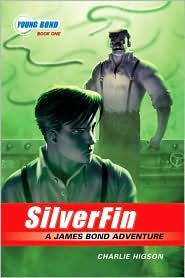
It is 1914. The Archduke Ferdinand and his wife are assassinated. Europe is splitting apart. The world is on the brink of war. Soaring in the sky above is a flying whale. Huh?
That’s right, a flying whale. Is there a problem with that? Don’t tell me you missed the flying whale part in eighth grade social studies? (Actually, given the dreadful state of social studies in our schools, chances are you missed everything.) Welcome to Scott Westerfeld’s wonderful “alternative history” of World War I, Leviathan. Rather than simply Great Britain vs. Germany, it is the Clankers vs. the Darwinists. The British are the Darwinists whose technology and weapons are based on creating hybrid animals, hence the flying whale. Or how about a flying jellyfish or squadrons of bats to bring down enemy planes? The Germans and the Austro-Hungarians are the Clankers, whose technology and weapons of war are machines. This is not just a war of politics; it is a war of technological ideology. Welcome to steampunk, the genre that is a hybrid itself, with an enthralling mix of past and future and fantasy, where machines – made of iron or made of flesh -- are as important as the people.
For much of this book (the first in a trilogy), there are two stories, slowly moving (literally) toward each other. The more interesting story is about Deryn Sharp, a girl who dreams of being an airman for Great Britain. The problem, of course, is that England did not take too kindly to the notion of airwomen. So Deryn pretends to be a boy, takes to the sky, and her adventure begins. Meanwhile, Alek , the son of the just-assassinated Archduke, is on the run. The heir to the throne, some in his own country have turned against him because his father did the dishonor of marrying a commoner. (As Westerfeld points out in an important Afterward, this is true to history.) Alek, along with some of his father’s trusted aids – and being a Clanker -- is stomping through the countryside in a giant armed Stormwalker. Give an army tank legs and you get the idea.
This is all tremendous fun. In many ways, Leviathan is an amazing work of imagination. I loved the science of the fabricated animals and the steampunk combination of history and fantasy. The idea of making Darwinian science a vital element of the story makes for an exciting and current read. The illustrations throughout the book by Keith Thompson (and the fabulous image on the endpapers) are an extra bonus.
As much as I enjoyed this book and look forward to the next one, there is something missing. It took me most of the book to realize what it is. Clearly, Westerfeld wrote this as a young adult novel. Yet, there is really nothing “young adult“ about it. Sure, World War I is a topic usually more suited for older readers, but while some of that history is wonderfully interwoven throughout Leviathan, it is done so in a way that will stop no one from turning the pages. Given this, there is absolutely nothing that should keep this book off the shelves (or out of the hands) of many younger readers. While that is certainly a good thing for them, the older readers pay the price. For a young adult novel, the book reads easy – too easy – and the characters lack depth. For a story about war, it is amazingly bloodless, to the point of being downright harmless.
Still, Leviathan is a great success of the imagination and an absolutely wonderful way to weave a bit of history into the lives of kids (and adults). It’s a fascinating combination of history and science and a great introduction (or addition) to steampunk. While it may be a weakness for older readers, the book makes all of this accessible to younger readers, hungry to stomp and fly their way through Europe, immersed in wars of politics and economic class and technology.
Review copy received from the publisher.









 This past year, I re-discovered comic books. I've written before how comics
This past year, I re-discovered comic books. I've written before how comics  All these heavy ideas should be as dry as burnt toast. Maybe even more impressive than the theories, though, is the breezy way Understanding Comics presents them. Drawn completely in comics format and narrated by McCloud's smiling alter-ego, this is literary theory meant for everyone.
All these heavy ideas should be as dry as burnt toast. Maybe even more impressive than the theories, though, is the breezy way Understanding Comics presents them. Drawn completely in comics format and narrated by McCloud's smiling alter-ego, this is literary theory meant for everyone.
















